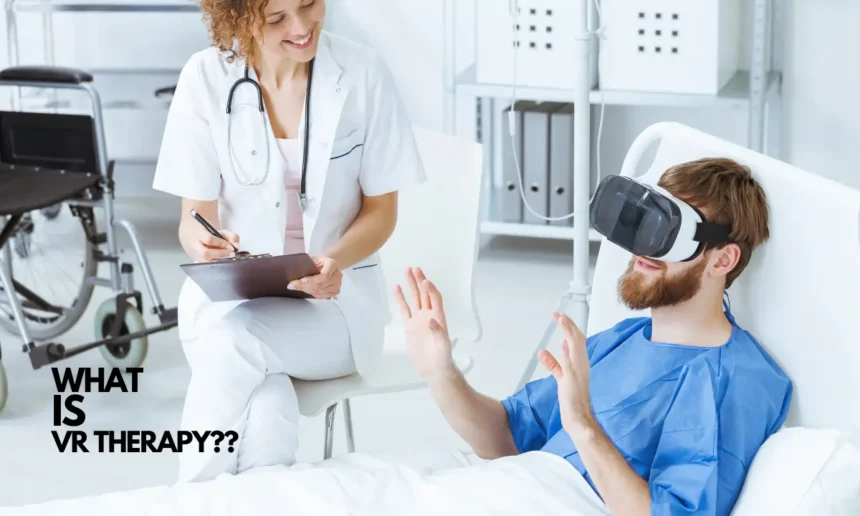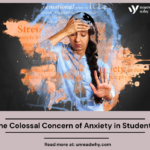VR Therapy abbreviated form of Virtual Reality Therapy, is a path-breaking initiative that is truly revolutionizing mental health treatments. This Therapy is gaining ground in recent times in the treatment of a variety of conditions like phobias, stress disorders like Post-traumatic Stress Disorder (PTSD) and Acute Anxiety Disorder (ASD), Social Anxiety Disorder, Obsessive-compulsive Disorder, Generalized Anxiety Disorder, Traumatic Brain Injury and different eating disorders.
Intubated ICU patients using VR to take a short immersive vacation while getting some physical exercise in. Source: darlan nitz pic.twitter.com/iX7zhtcTRM
— Oren Gottfried, MD (@OGdukeneurosurg) August 2, 2023Working in VR Therapy
VR therapy, by leveraging the power of technology, creates a highly realistic virtual environment capable of providing an immersive experience for the user. This is done by equipping patients with a VR headset that allows them to interact with virtual worlds tailored to address their specific needs. These virtual environments are customised depending on the needs of the patients and can range from serene landscapes to challenging social situations, which enable them to recreate the situation that has resulted in the trauma in the first place. This unique capability, therefore, makes VR an innovative platform for therapeutic interventions.
Advantages of VR Therapy over Traditional Therapy
VR is capable of offering certain advantages over traditional therapy in the treatment of certain mental health conditions.
Immersive Exposure Therapy: VR creates a highly realistic environment which is controlled and this is used to gradually expose patients to their fears in a safe and manageable way. This treatment, therefore, is particularly effective for phobias, anxiety disorders, and PTSD as they recreate or create the situation which triggers the fear in the first place. Traditional exposure therapy is challenging and highly impractical and often cannot be controlled in the manner in which this therapy is done. It is highly effective in the treatment of PTSD as it enables the creation of traumatic experiences in a virtual environment and allows patients the opportunity to confront their fears and develop coping mechanisms accordingly.
Social Skills Training: This Therapy is capable of simulating various social situations and allows patients to practice communication skills, social interactions, and conflict resolution in a supportive and controlled setting. It is observed that this can help them to overcome their fear of social interaction and encounter their Social Anxiety Disorder (SAD). This also helps individuals with autism spectrum disorder in developing their communication skills.
Pain Management: VR reliant Therapy is proving beneficial in pain management as it is known to be capable of distracting patients from pain sensations and thereby making them more tolerable. This not only helps in the management of chronic pain conditions but also during medical procedures that involve painful treatment processes without the use of anaesthesia.
Mental Health Assessment: VR reliant Therapy is not only helpful in the treatment of mental health conditions but also has the potential to diagnose certain mental health conditions. It provides a standardised environment for observing and assessing patient behaviour, which leads to a more objective and reliable diagnosis. Thus, mental health assessment has been transformed like never before, which traditional therapy could not have contributed to.
Accessibility and Convenience: Accessibility of VR Therapy makes it convenient for patients whose mobility is restricted. In addition to that, this therapy can be delivered remotely, thereby making it accessible to a wider range of patients, especially those in rural or underserved areas.
Risk Factors Associated with VR Therapy
From the above discussion, it seems that VR Therapy is a panacea to all mental health complexities, but this seems to be a partial truth. There are certain risk factors associated with VR Therapy. Experts are of the opinion that prolonged use of VR may lead to symptoms like nausea, dizziness, and headaches. Moreover, eyesight and hearing ability can be severely impacted due to long-time exposure to this Therapy. Additionally, addiction remains another concern that has bothered experts and mental health professionals, as overuse of this Therapy may make individuals overly reliant on VR for social interaction or escapism.
Besides, simulated conditions to treat PTSD and phobias run the risk of causing emotional stress as some virtual experiences, especially those related to trauma or anxiety, might end up triggering negative emotions. Apart from these, practical limitations include technical issues like malfunctioning equipment or software glitches which can disrupt costly therapy sessions which are usually scheduled appropriately to increase their effectiveness.
Moreover, presently, there is a lack of standardized protocols for VR therapy, which leads to potential inconsistencies in treatment. Above all, these therapy sessions are extremely expensive, and hence affordability of such treatment is limited. As per CleVR BV, a company that is known for designing VR sets, the estimated annual cost for one VR system is €23,995. In addition to this, the yearly cost for training and supervision of the psychologists was €13,400, which makes per 16 VR-CBT treatment session for each patient stand at €373.95. Moreover, such sophisticated technology and adequate skilled professionals are not available in the majority of countries, which creates a major barrier between developed and developing countries.
FAQ
1. What is VR Therapy and how does it work?
VR Therapy, or Virtual Reality Therapy, is a cutting-edge therapeutic approach that utilizes immersive virtual environments to treat various mental health conditions. By creating highly realistic simulations, VR therapy allows patients to confront their fears and anxieties in a controlled and safe setting. For instance, individuals with phobias can be gradually exposed to their fears, while those with PTSD can relive traumatic experiences in a less distressing way.
2. What are the advantages of VR Therapy over traditional therapy?
VR Therapy offers several advantages over traditional therapy methods. VR can create highly controlled environments to expose patients to their fears in a gradual and manageable manner. It can simulate various social situations, allowing patients to practice communication and interaction skills in a safe setting. VR can distract patients from pain sensations, making them more tolerable.
3. Are there any risks associated with VR Therapy?
While VR Therapy offers significant benefits, there are potential risks that include addiction, emotional stress, and side effects like nausea, dizziness, and headaches. Malfunctioning equipment or software glitches can disrupt therapy sessions which are usually scheduled appropriately to increase their effectiveness.
4. How effective is VR Therapy in treating mental health conditions?
VR Therapy has shown promising results in treating a variety of mental health conditions, including phobias, anxiety disorders, PTSD, and social anxiety disorder. However, more research is needed to fully understand its long-term efficacy and potential side effects.

















